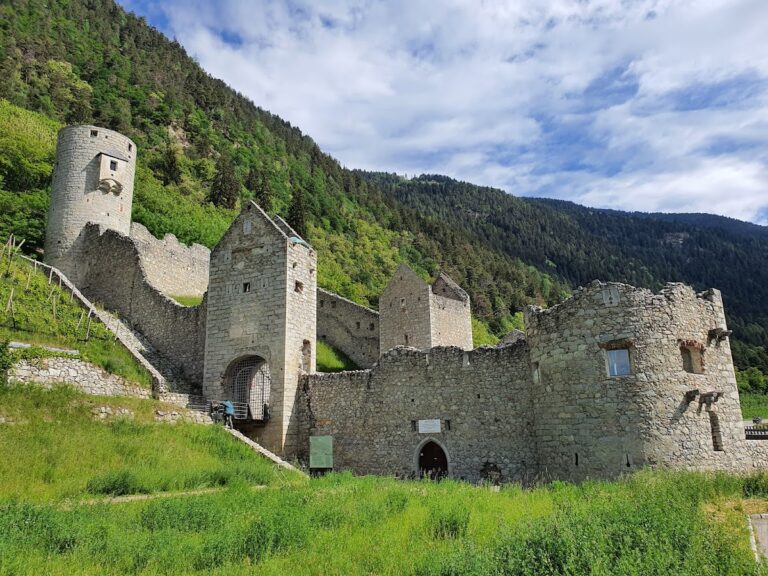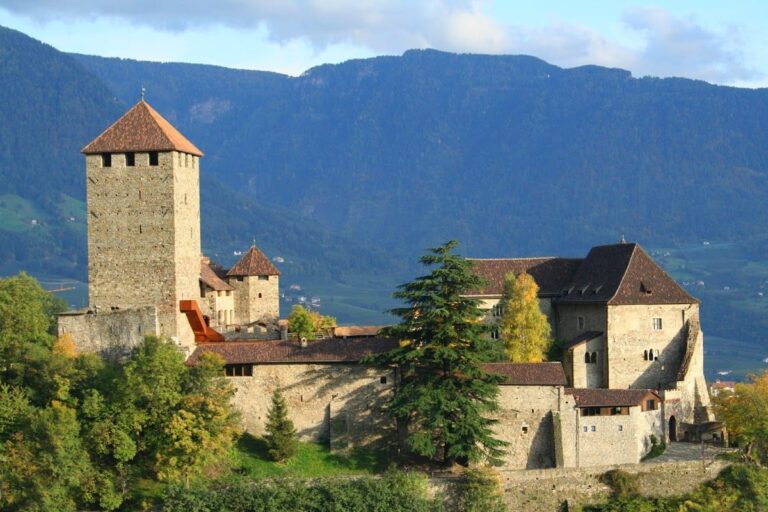Reifenegg Castle: A Medieval Fortress in South Tyrol, Italy
Visitor Information
Google Rating: 4.3
Popularity: Very Low
Google Maps: View on Google Maps
Country: Italy
Civilization: Unclassified
Remains: Military
History
Reifenegg Castle is located in the municipality of Racines in modern-day Italy. It was built by the bishops of Brixen together with the Trautson family, a noble line serving partly as ministeriales—unfree knights or stewards—under the bishops and partly under the rulers of Tyrol, during the early 13th century.
Construction of the castle began around 1210 and continued until about 1242. Its strategic purpose was to oversee and control the important passage over the Jaufen Pass, a mountain route of significance in that era. The first known vassal associated with Reifenegg was Berthold Trautson the Elder, who appears in records from 1242 calling himself “de Riffeneke,” referring to the castle. By 1249, ownership within the Trautson family had been divided between Berthold’s sons, Jakob and Dietmar. Jakob’s portion eventually passed to the Rottenburger family, who also owned the nearby Moos Castle.
In 1243, the castle came under the control of Count Albert III of Tyrol following his victory over Bishop Egno of Eppan in a local conflict. This change marked Reifenegg’s integration under Tyrolean secular authority. After the Rottenburger family lost their standing in 1410, administration of Reifenegg and Moos shifted to being managed as a bailiwick, an administrative district governed by appointed officials.
Following this period, the castle remained a fief held by the Trautson family, with Dietmar Trautson, who died in 1346, recorded as the last family member to dwell there. Over time, ownership passed through various noble hands, including the Reichenburg family from 1510, followed by the Völs family and then the Degen von Fuchsberg lineage. Eventually, Uriel Geizkofler acquired the castle and adopted the surname “Reifenegg,” linking his identity directly to the estate.
By the mid-16th century, reports described Reifenegg Castle as deserted. Documentation from 1649 notes it as completely ruined and unlivable under Ludwig Perkhofer’s ownership. Subsequent owners, notably the Freiherren von Sternbach, managed to reunite the property but did not restore the structure, leaving it in ruins.
Since 1964, the Kafmann family from Welschnofen has possessed the site. In 1993, the regional South Tyrolean government undertook efforts to stabilize and partially restore the ruins. Local folklore adds a layer of mystery to the site through a legend of a hidden treasure guarded by a spectral dog, enhancing Reifenegg’s cultural resonance in the region.
Remains
The ruins of Reifenegg Castle occupy a narrow ridge that slopes toward the northeast, flanked by steep drops on both sides. The site’s most striking remnant is the bergfried, or main tower, positioned on the southern end of the castle complex. This tower boasts a square base measuring just over ten meters on each side and rises to a height of nearly 24 meters. The bergfried’s foundations are notably robust, with walls over two meters thick. Its corners feature interlocking rusticated ashlar blocks, known as buckelquader, a distinctive masonry technique that adds strength and aesthetic texture. An original entrance to the tower sits elevated approximately eight meters above the current ground level, a design intended for defense.
Fragments of door frames engraved with the Trautson family coat of arms remain preserved at the site, offering direct links to the castle’s early proprietors. Around the eastern and northern slopes of the hill, remnants of walls are visible. These feature embrasures carved from squared stones in the eastern and western sections, which would have served as narrow openings for archers or small firearms during the castle’s active years.
Evidence survives of the palas, or residential building, once forming part of the castle’s living quarters. To the north lies the forecourt, called the vorburg, which is enclosed by a ring wall that descends along the eastern slope before making a right-angled turn following the natural incline of the terrain. Attached to this defensive wall once stood a small building indicated by beam holes embedded in the wall, revealing former divisions of interior floors.
Below the main structure, a neck ditch is believed to have existed on the southern side, functioning as a defensive trench between the castle and the approach path. The bergfried originally rose over four stories and featured arched windows, reflecting both its military purpose and architectural style.
The ruins now rest within a dense coniferous forest and are accessible only via a footpath leading up from the nearby village of Stanghe. Within this quiet setting, the remains of Reifenegg Castle provide a tangible connection to the medieval era of border control and feudal lordship in the Tyrol region.







